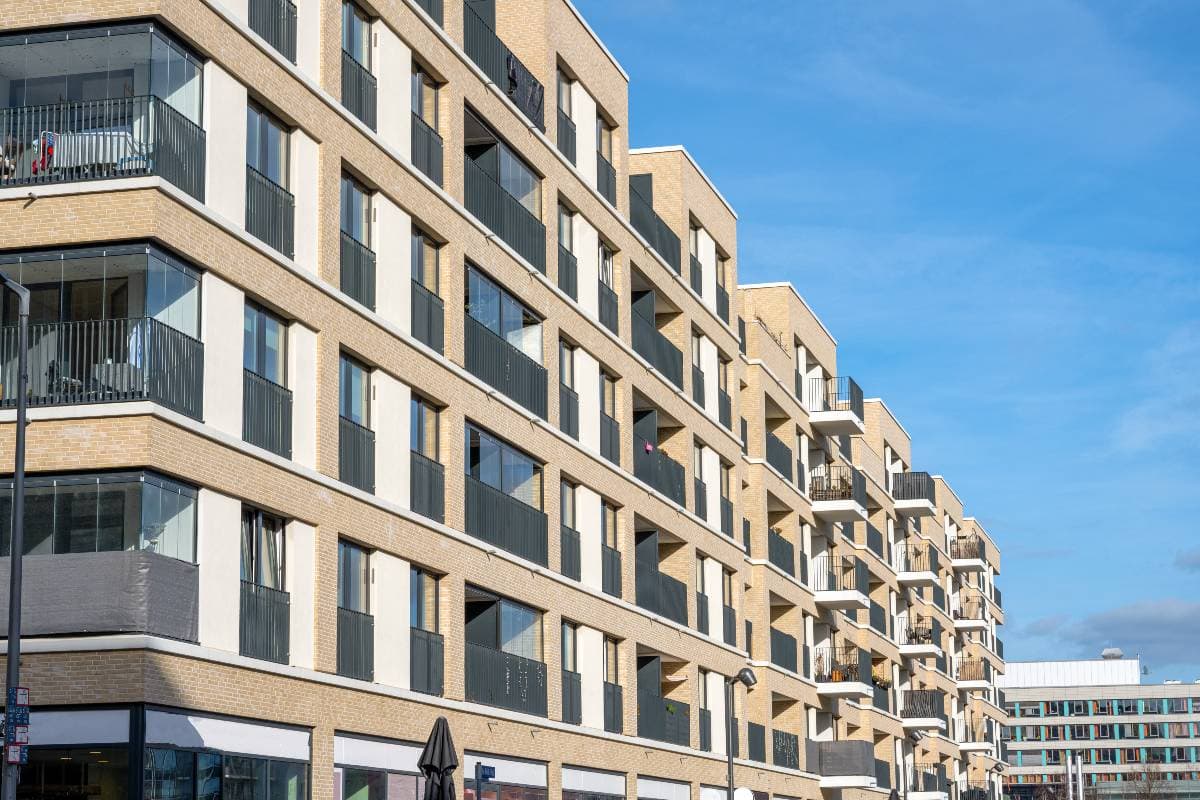Hey there, fellow property managers and apartment investors! Mike Tolj here, and boy, do I have some insights to share with you about apartment occupancy rates. With over 18 years in the commercial real estate game, I’ve seen it all when it comes to filling those units and keeping them filled.
Key Takeaways
- Understanding and optimizing occupancy rates is crucial for multifamily property success
- Effective marketing strategies and property management techniques can significantly boost occupancy
- Adapting to market trends and leveraging technology are key to staying competitive in the rental market
Table of Contents
Beyond Numbers: Strategic Valuation
At Tolj Commercial, we don’t just appraise properties; we reveal opportunities. Our valuation services provide the strategic edge you need in today’s market.
Innovative Strategies to Boost Apartment Occupancy Rates in 2024 and Beyond
Let’s face it: in our world, high occupancy isn’t just a goal—it’s the lifeblood of our business. Whether you’re managing a cozy 50-unit complex or overseeing a sprawling 500-unit community, your occupancy rate is the pulse of your property’s financial health. And in today’s ever-changing rental market, staying ahead of the curve is more crucial than ever.
So, buckle up! We’re about to dive into some innovative strategies that’ll help you boost those occupancy numbers and keep your property performance soaring. Trust me, by the time we’re done, you’ll be itching to implement these ideas faster than a tenant can say, “Where do I sign?”
Understanding Occupancy Rates
Before we jump into the nitty-gritty of boosting occupancy, let’s make sure we’re all on the same page about what we’re measuring. Occupancy rate is simple in theory—it’s the percentage of your rental units that are occupied at any given time. But like anything in real estate, there’s always more than meets the eye.
First off, we’ve got two types of occupancy to keep in mind:
- Physical occupancy: The actual number of units with tenants in them.
- Economic occupancy: The amount of potential rent you’re collecting compared to what you could be collecting if all units were rented at market rate.
Now, calculating your occupancy rate is as easy as pie:
Occupancy Rate = (Occupied Units / Total Number of Units) x 100
But here’s where it gets interesting. The national average for apartment occupancy has been on a wild ride lately. We saw it hit an all-time high of 97.5% in early 2022, but then it took a bit of a nosedive. As of the end of 2023, we’re looking at a national average hovering around 94-95%.
What’s causing these fluctuations? Well, buckle up, because it’s a perfect storm of factors:
- Post-pandemic migration patterns
- A surge in apartment supply in some markets
- Economic uncertainty affecting renter behavior
- Shifting preferences in work-from-home setups
Understanding these trends is crucial because they directly impact your strategy for boosting occupancy. It’s not just about filling units anymore—it’s about adapting to a rapidly changing landscape.
Market Analysis and Positioning
Alright, now that we’ve got the basics down, let’s talk about positioning your property for success. In my years of deal-making, I’ve learned that knowing your market inside and out is half the battle.
First things first: market research. I’m not talking about a quick Google search here. I mean diving deep into local economic trends, demographic shifts, and upcoming developments in your area. Are there new companies moving in? University expansions? This could mean an influx of potential renters.
Next up, identify your target demographic. Are you catering to young professionals, families, or retirees? Each group has different needs and preferences. For instance, if you’re targeting millennials, you might want to emphasize your property’s sustainability initiatives and smart home features.
Now, let’s talk about the competition. What are other apartment complexes in your area offering? How do your amenities stack up? This isn’t about copying them—it’s about finding your unique selling proposition. Maybe it’s your rooftop garden, your pet-friendly policies, or your unbeatable location. Whatever it is, make it shine!
Developing a unique value proposition is key. This is what sets you apart in a sea of rental options. Maybe you’re the only property in the area offering a co-working space, or perhaps you’ve got the best views in town. Find that special something and make it the cornerstone of your marketing efforts.
In this game, standing out isn’t just nice—it’s necessary. Your property needs to be more than just a place to live; it needs to be a lifestyle choice that resonates with your target renters.
Marketing and Online Presence
In today’s digital age, your online presence is often the first impression potential renters get of your property. And let me tell you, in my 18 years in this business, I’ve seen the power of a strong online game transform properties from vacancy nightmares to fully leased success stories.
Let’s start with your website. Is it mobile-responsive? Does it load quickly? These aren’t just nice-to-haves anymore—they’re essentials. Your website should be a virtual tour of your property, showcasing your best features and making it easy for prospects to envision themselves living there.
Social media marketing is another game-changer. Platforms like Instagram and Facebook are perfect for showing off your property’s personality. Share photos of community events, highlight happy residents (with their permission, of course), and give virtual tours of your amenities. It’s all about creating a sense of community that potential renters want to be part of.
Speaking of virtual tours, if you haven’t implemented them yet, now’s the time. With the rise of remote work and long-distance moves, many renters are making decisions without ever stepping foot on the property. High-quality virtual tours and 3D walkthroughs can be the difference between a signed lease and a missed opportunity.
Don’t forget about online listings. Sites like Zillow, Apartments.com, and even good old Craigslist can be goldmines for leads. But here’s the trick: your listings need to stand out. Use high-quality photos, write compelling descriptions, and make sure your information is up-to-date across all platforms.
Lastly, let’s talk about content marketing and SEO. Creating valuable content—like blog posts about local attractions or tips for first-time renters—can help drive organic traffic to your site. By optimizing for local search terms, you can ensure that when someone in your area is looking for an apartment, your property is at the top of the list.
In the digital world, visibility is currency. The more eyes you can get on your property, the better your chances of boosting that occupancy rate.

Pricing Strategies and Incentives
Alright, let’s talk money—specifically, how to price your units to maximize occupancy without leaving money on the table. It’s a delicate balance, but get it right, and you’ll see those vacancy rates plummet.
First up: competitive pricing analysis. This isn’t just about matching your competitors’ rates. It’s about understanding the value you offer and pricing accordingly. Are your units larger? Do you offer better amenities? These factors can justify a higher price point.
Now, let’s discuss move-in specials and rental concessions. These can be powerful tools for attracting new tenants, especially in slower seasons. Some ideas to consider:
- First month’s rent-free
- Reduced security deposit
- Free parking for a year
- Complimentary gym membership
But here’s the catch: make sure these specials are structured in a way that doesn’t hurt your long-term revenue. For example, instead of offering a month of free rent, consider spreading that discount across the entire lease term.
Flexible lease terms are another way to attract tenants. Some renters might be hesitant to commit to a full year. Offering 6-month or even month-to-month options (at a slightly higher rate) can open up your property to a whole new market of short-term renters.
Lastly, don’t forget about your current residents. A referral program can be a win-win. Offer existing tenants a rent credit for successful referrals. Not only does this bring in new renters, but it also increases the likelihood of your current tenants renewing their leases.
Your pricing strategy should be dynamic. Keep an eye on market trends, occupancy rates, and seasonal fluctuations. Being willing to adjust your rates in response to these factors can help you stay competitive and keep those units filled.
Enhancing Property Appeal
Let’s face it: in today’s competitive rental market, your property needs to be more than just a place to live—it needs to be a place people want to call home. Enhancing your property’s appeal is about creating an environment that not only attracts new tenants but also keeps your current residents happy and renews those leases.
First up, let’s talk amenities. Gone are the days when a simple gym and a pool were enough to wow renters. Today’s tenants are looking for experiences. Consider adding:
- Co-working spaces for the work-from-home crowd
- Rooftop gardens or community vegetable plots
- Pet grooming stations (because Fido deserves some luxury too!)
- Yoga studios or meditation rooms for the wellness-minded
But it’s not just about adding new features—it’s about upgrading what you already have. If your gym equipment looks like it’s from the 80s, it’s time for an update. Fresh paint, new carpets, and modern fixtures in common areas can make a world of difference.
Now, let’s talk about smart home technology. This is a game-changer, folks. Smart thermostats, keyless entry systems, and built-in USB charging ports are no longer luxuries—they’re expectations for many renters. These upgrades not only attract tech-savvy tenants but can also help reduce your operational costs in the long run.
Don’t forget about the exterior of your property. Curb appeal matters more than you might think. Well-maintained landscaping, clean walkways, and attractive lighting can make a stellar first impression. And trust me, in this business, first impressions count for a lot.
Lastly, let’s address the elephant in the room: pets. A pet-friendly policy can significantly expand your pool of potential renters. Consider going beyond just allowing pets—think about adding a dog park or partnering with a local pet-sitting service. These little touches can make pet owners feel truly welcome.
Enhancing your property’s appeal is an ongoing process. Stay tuned to what your current and prospective tenants want, and be willing to adapt. It’s not just about keeping up with the Joneses—it’s about setting the standard that others will try to match.
Resident Retention Strategies
Now, let’s talk about keeping the tenants you already have. After all, it’s much easier (and cheaper) to retain a resident than to find a new one. Resident retention is all about creating a community that people don’t want to leave.
First and foremost, customer service is king. Responsive management, quick maintenance turnaround, and clear communication can make all the difference. Consider implementing a resident portal for easy rent payments and maintenance requests. The easier you make it for residents to interact with you, the happier they’ll be.
Community events are another great way to foster a sense of belonging. Think beyond the typical wine and cheese night (although those are great too!). How about:
- Fitness classes in that newly upgraded gym
- Cooking demonstrations in a community kitchen
- Outdoor movie nights in the summer
- Holiday-themed parties throughout the year
Regular tenant satisfaction surveys are crucial. They not only show that you care about resident opinions but also provide valuable insights into what you’re doing right and where you need to improve.
Don’t underestimate the power of personal touches. Remembering a resident’s name, acknowledging their birthday, or even just asking how their day is going can create a positive emotional connection to your property.
Lastly, consider implementing a lease renewal incentive program. This could be anything from a small rent discount to a unit upgrade. The key is to make residents feel valued and to give them a reason to stay.
Happy residents not only renew their leases but also become your best advertisers. Word-of-mouth recommendations from satisfied tenants can be more powerful than any marketing campaign.
Leveraging Data and Technology
In today’s digital age, data is king, and technology is your trusty sidekick in the quest for higher occupancy rates. Let’s dive into how you can use these tools to supercharge your property management game.
First up, property management software. If you’re still using spreadsheets to track leases and maintenance requests, it’s time for an upgrade. Modern software solutions can streamline everything from rent collection to work order management, freeing up your time to focus on strategy.
Next, let’s talk about AI-driven chatbots. These little digital assistants can be game-changers for lead generation. They can answer prospect questions 24/7, schedule viewings, and even start the application process. And the best part? They never sleep, take vacations, or have bad days.
Data analytics is another powerful tool in your arsenal. By analyzing market trends and your own historical data, you can make more informed decisions about:
- Pricing strategies
- Marketing campaigns
- Amenity upgrades
- Lease renewal timing
Consider implementing a customer relationship management (CRM) system specifically designed for property management. This can help you track leads, manage resident communications, and identify patterns in tenant behavior.
Smart home technology isn’t just a cool amenity—it can also provide valuable data. Smart thermostats and water meters can help you identify maintenance issues before they become problems, potentially saving you thousands in repairs.
Lastly, don’t forget about social listening tools. These can help you monitor what people are saying about your property online, allowing you to address issues quickly and capitalize on positive feedback.
The goal of leveraging technology isn’t to replace the human touch—it’s to enhance it. Use these tools to free up time for more personal interactions with your residents and to make data-driven decisions that boost your occupancy rates.
Sustainability and Energy Efficiency
Let’s talk green—and I don’t just mean the color of money. Sustainability and energy efficiency are more than just buzzwords; they’re becoming key factors in many renters’ decision-making processes. Plus, they can save you a pretty penny in operational costs.
Start with the basics: energy-efficient appliances and LED lighting. These not only reduce utility costs but are also attractive selling points for environmentally conscious renters. Consider going a step further with:
- Solar panels on rooftops
- Low-flow water fixtures
- Smart thermostats in each unit
- Energy-efficient windows and insulation
But sustainability isn’t just about energy use. Think about implementing a recycling program or composting system for your community. You could even start a community garden—it’s a great way to promote sustainability and build community at the same time.
Green building certifications like LEED can be a powerful marketing tool. They demonstrate your commitment to sustainability and can attract a growing demographic of eco-conscious renters.
Don’t forget to educate your residents about your green initiatives. Regular newsletters or workshops on sustainable living practices can help engage your community and reinforce your property’s commitment to the environment.
Sustainability isn’t just good for the planet—it’s good for your bottom line. Lower utility costs mean higher NOI and green features can justify higher rents. It’s a win-win-win situation for you, your tenants, and the environment.

Streamlining the Application and Move-In Process
In today’s fast-paced world, convenience is king. The easier you make it for potential tenants to apply and move in, the more likely they are to choose your property. Let’s break down how to streamline this process.
First, online applications are a must. They allow prospects to apply anytime, anywhere, which can significantly speed up the leasing process. Make sure your online application is mobile-friendly—many people will be filling it out on their phones.
Virtual property tours have become increasingly popular, especially since the pandemic. They allow potential tenants to view your property from the comfort of their own homes, which is particularly attractive for out-of-town applicants.
Consider implementing a tenant screening service that can quickly verify income, employment, and rental history. This can dramatically reduce the time between application and approval.
Once approved, make the move-in process as smooth as possible. Some ideas:
- Provide a detailed move-in checklist
- Offer flexible move-in dates
- Partner with a local moving company to offer discounted services
- Have a welcome package ready in the apartment (think essentials like toilet paper, soap, and maybe a local restaurant guide)
Remember, first impressions matter. A smooth application and move-in process sets the tone for the entire tenancy. Get this right, and you’re well on your way to higher occupancy rates and happier tenants.
Adapting to Market Changes and Trends
The only constant in the real estate market is change. Staying ahead of the curve is crucial for maintaining high occupancy rates. Here’s how to keep your finger on the pulse of the market:
- Stay informed: Subscribe to industry publications, attend conferences, and network with other property managers. Knowledge is power in this business.
- Monitor local economic factors: Are new businesses moving to the area? Is there a shift in the job market? These factors can significantly impact rental demand.
- Keep an eye on demographic shifts: Are millennials moving out and Gen Z moving in? Different generations have different housing preferences.
- Be flexible: Be prepared to adjust your strategies based on market conditions. This might mean changing your amenity offerings, adjusting your pricing strategy, or even repositioning your property to appeal to a different demographic.
- Prepare for economic fluctuations: Have contingency plans in place for both market upswings and downturns. This might include setting aside reserves for renovations during slow periods or having strategies to quickly scale up during boom times.
Adaptability is key in the ever-changing world of property management. Those who can pivot quickly in response to market changes are the ones who will maintain high occupancy rates regardless of external conditions.
Beyond Numbers: Strategic Valuation
At Tolj Commercial, we don’t just appraise properties; we reveal opportunities. Our valuation services provide the strategic edge you need in today’s market.
FAQs
How often should I review and adjust my rental rates?
It’s best to review rental rates quarterly but be prepared to adjust more frequently in rapidly changing markets. Always stay informed about local market conditions and competitor pricing.
What’s the most cost-effective way to upgrade my property’s amenities?
Focus on upgrades that provide the most value to tenants relative to cost. Often, this includes things like high-speed internet, smart home features, or communal spaces like co-working areas or fitness centers.
How can I improve my property’s online reputation?
Actively manage your online reviews by responding promptly and professionally to both positive and negative feedback. Encourage satisfied tenants to leave reviews, and address any issues raised in negative reviews quickly and transparently.
What are some effective ways to reduce tenant turnover?
Focus on building a sense of community through events and good communication. Offer incentives for lease renewals, maintain the property well, and respond quickly to maintenance requests. Personal touches, like remembering tenants’ names or acknowledging birthdays, can also go a long way.
How can I make my property more attractive to environmentally conscious renters?
Implement green initiatives such as energy-efficient appliances, recycling programs, and sustainable landscaping. Consider obtaining green building certifications like LEED. Communicate your sustainability efforts clearly in your marketing materials.
Conclusion
We’ve covered a lot of ground, haven’t we? From understanding the nuts and bolts of occupancy rates to leveraging cutting-edge technology and sustainability practices, we’ve explored a wide range of strategies to boost your apartment occupancy rates. Remember, there’s no one-size-fits-all solution when it comes to increasing occupancy rates. It’s about finding the right mix of strategies that work for your specific property and market. The key is to stay proactive, not reactive.
Don’t wait for vacancy rates to climb before you start implementing these strategies. Make them a part of your ongoing property management approach. And most importantly, never stop learning and adapting.
The real estate market is always evolving, and so should your strategies. Click here to schedule a consultation. We’ll discuss your current challenges, analyze your property’s potential, and develop a custom action plan to boost your occupancy rates. Don’t let vacant units eat into your profits any longer. Let’s work together to maximize your property’s potential and drive your business forward.




